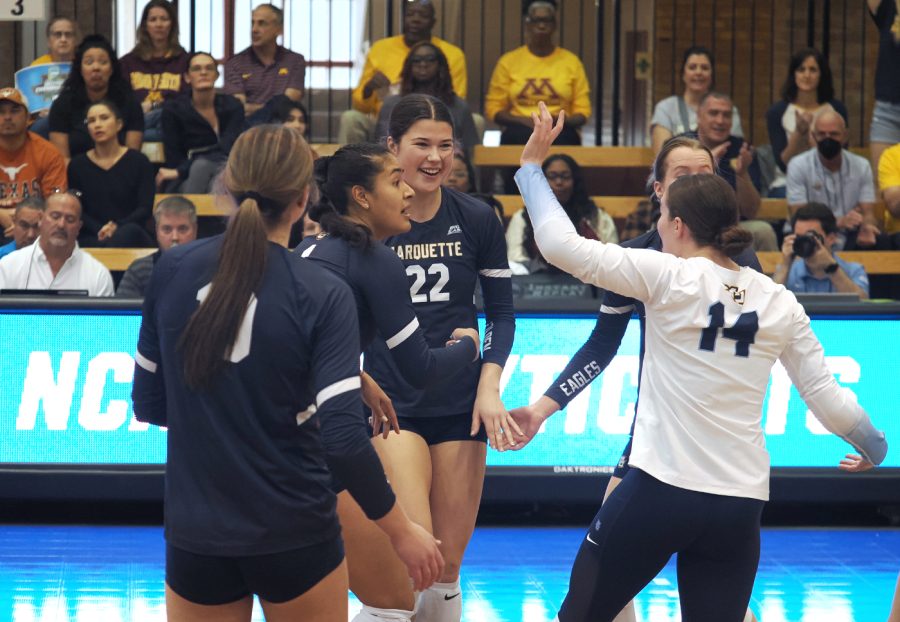
Game 1: No. 2 Wisconsin vs. No. 15 American University
Wisconsin qualified for its 16th consecutive NCAA Tournament, and its 13th under coach Bo Ryan. The Badgers can hope that by playing in Milwaukee they will increase their chances of advancing to the Elite Eight, which they have not accomplished since 2005. The last time Wisconsin was a No. 2 seed (2007), it was eliminated in the second round.
The Badgers have vastly improved since their uncharacteristically shaky play in January in which they lost five of six games during one stretch. Using a multitude of scoring options (five players average nine points per game or more), Wisconsin should be able to coast against an inexperienced American program.
The Eagles’ Princeton-style offense consequently does not lead to much scoring (63.9 ppg, 316th nationally), but it does allow it to take the shots it wants (49.5 FG percent, 7th nationally). Wisconsin, which also runs a deliberate offense, simply has too many weapons for American to handle.
Game 2: No. 7 Oregon vs. No. 10 Brigham Young
This game will be the second meeting of the year between the two schools, with Oregon pulling ahead at home in a 100-96 overtime win in December.
Brigham Young has been carried all season by junior guard Tyler Haws, who averages 23.4 points and shoots 88 percent from the foul line. He’ll need to up his game even more in the absence of BYU’s second-leading scorer, Kyle Collinsworth, who suffered an ACL tear last week. Collinsworth played a crucial part in the the team’s inside game, and it will be intriguing to see how BYU responds under the circumstance.
Both squads had their respective low points this season; BYU endured a four-game losing streak and Oregon went through a five-game slide. The Ducks prove to be efficient from the perimeter, shooting at a 39.2 percent clip from the three-point line.
Expect Wisconsinites to attend and show their support for BYU freshman Luke Worthington, a native of Mequon.
Game 3: No. 2 Michigan vs. No. 15 Wofford
Wofford received an automatic bid after winning the Southern Conference Tournament. This will be the Terriers’ third time in the Big Dance, although they have yet to advance past the second round. Mike Young’s feisty group was perhaps written off prematurely when it started the year 7-10, but the Terriers come to Milwaukee 20-12. Wofford allows only 62.4 points per game, which can be explained by its low amount of possessions per game (63.5, 334th nationally).
Michigan hasn’t exactly eased up on the accelerator since last year’s national championship appearance. The Wolverines won the Big Ten regular season title and had one of the most difficult schedules in the country. Despite this, Michigan compiled a 10-5 record against the RPI Top 50, and its only questionable losses came against Charlotte and Indiana. Sophomore Nik Stauskas averages 17.5 points this season. After playing in the shadows of Trey Burke and Tim Hardaway, Jr. last season, Stauskas appears more ready to lead the team when it counts.
Game 4: No. 7 Texas vs. No. 10 Arizona State
Texas could have been seeded better had it not been for its roller coaster ending to the season. The Longhorns are 5-6 in their last 11 games and have alternated wins and losses in the last six. They still ended at a respectable 11-7 in a brutal Big 12 field. The Longhorns crash the boards like mad, grabbing 41.8 rebounds per game, 15 of which came on the offensive glass. This can be attributed to its mediocre shot selection and execution; Texas shoots 43 percent overall and 32 percent from long range.
Arizona State returns to March Madness for the first time in five years. The Sun Devils earned an at-large bid due to its strength of schedule and its wins over Arizona, Oregon and then-No. 25 Marquette, despite the shellacking it suffered to Stanford in its first Pac-12 Tournament game. Behind the defensive anchor Jordan Bachynski (11.1 ppg, 8.3 reb. 4.1 blk), Arizona State may be the Midwest region’s dark horse.







